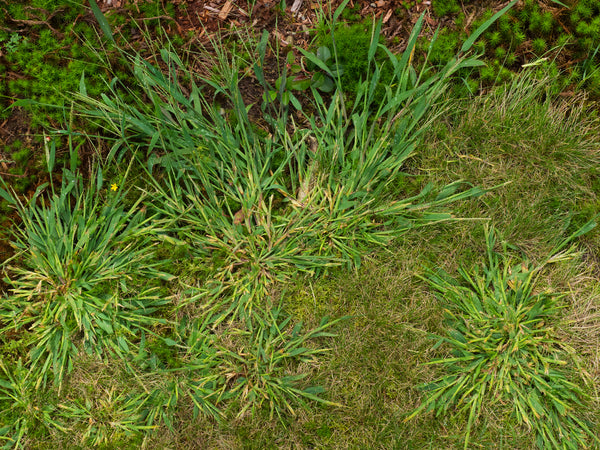As an Amazon Associate, I earn from qualifying purchases.
Weeds that look like grass can be challenging to identify and manage. Crabgrass, quackgrass, and nutsedge are common examples.
Weeds often mimic the appearance of grass, making lawn care a challenging task. Recognizing these weeds is essential for maintaining a healthy lawn. Crabgrass is a prevalent weed that thrives in warm weather and can quickly overtake a lawn. Quackgrass spreads through its extensive root system and can be tough to eliminate.
Nutsedge, characterized by its triangular stems, prefers moist environments and can grow rapidly. Proper identification and targeted treatments are crucial for effective weed control. A well-maintained lawn not only looks better but also prevents these weeds from spreading. Understanding these common grass-like weeds is essential for creating a lush, weed-free lawn.
Common Weed Types
Crabgrass grows quickly and spreads fast. It thrives in the summer heat. This weed has broad, coarse leaves. Crabgrass can choke out your lawn. It can also take over flower beds. Regular mowing helps control it. Use a pre-emergent herbicide in spring.
Quackgrass is a perennial weed. It has long, spiky blades. This weed spreads through its roots. It can invade gardens and lawns. Quackgrass is hard to remove. Pulling it out often leaves roots behind. Herbicides can help, but multiple treatments are needed.
Identifying Weeds Vs Grass
Distinguishing between weeds and grass can be challenging, especially when weeds mimic grass. Some common lawn invaders include crabgrass, quackgrass, and nutsedge, often mistaken for healthy turf. Proper identification ensures effective lawn care and maintenance.
Leaf Shape
Weeds and grass can look very similar. One way to tell them apart is by looking at the leaf shape. Grass leaves are usually long and thin. Some weeds also have thin leaves, but they might be wider or have different edges. Weeds like crabgrass have broader leaves with rough edges. Grass leaves are smooth, while weed leaves can be hairy or have a rough texture.
Growth Patterns
Weeds often grow in clumps, while grass grows more evenly. Some weeds grow faster than grass. They can also spread out in different directions. Grass usually grows straight up. Weeds like dandelions have a rosette growth pattern. They spread out close to the ground. Knowing these growth patterns helps you spot weeds in your lawn.
Why Weeds Thrive In Lawns
Soil conditions play a big role in weed growth. Poor soil may lack nutrients. Weeds are hardy and grow in bad soil. Grass needs good soil to stay healthy. Weeds can take over if soil is bad. Healthy soil helps grass stay strong.
Watering practices affect both grass and weeds. Overwatering can help weeds grow. Grass needs the right amount of water. Too much water weakens grass. Weeds thrive in wet soil. Watering deeply and less often is best. This helps grass roots grow deep. Strong roots keep weeds away.
Manual Weed Removal
Hand pulling is simple and effective. Grasp the weed near the base. Pull firmly to remove the root. Wear gloves to protect your hands. This method is most effective for small infestations.
Tools can make weed removal easier. Use a dandelion weeder or a garden fork. Insert the tool into the soil near the weed. Leverage the tool to remove the weed. Ensure you remove the entire root to prevent regrowth.
Chemical Weed Control
Herbicides are chemicals that kill weeds. They can be selective or non-selective. Selective herbicides target specific weeds without harming grass. Non-selective herbicides kill all plants they touch. Always follow the instructions on the label. Wear protective gear like gloves and masks. Apply herbicides on dry, windless days. This prevents the chemicals from spreading. Keep children and pets away from treated areas. Water the lawn a day before applying herbicides. This helps the chemicals to work better. Do not mow the lawn immediately after application. Wait at least two days before mowing. Store herbicides in a secure location, out of the reach of children and pets.
Use a sprayer for even application. Avoid spraying on windy days. This prevents drift to other plants. Apply in the early morning or late evening. This is when the sun is not too strong. Read the label for specific timing. Follow all safety guidelines. Wash your hands after application. Clean the sprayer thoroughly. Store it in a safe place.
:strip_icc()/nutsedge-grassy-perennial-weed-detail-4a555eca-ae35ea51a9ea48848a893e15a50fa11d.jpg)
Preventing Weed Growth
Mow your lawn regularly to keep the grass healthy. Cutting the grass at the right height is important. Taller grass shades the soil. This helps to prevent weeds from growing. Avoid cutting the grass too short. This can weaken the grass, allowing weeds to grow.
Fertilizing your lawn can help grass grow stronger. Healthy grass can outcompete weeds. Use the right type of fertilizer for your grass. Follow the instructions on the package. Apply fertilizer at the right times of the year. This helps the grass stay strong and healthy.
Organic Weed Control Methods
Natural herbicides can help control weeds. Vinegar is a popular choice. It burns the weeds. Another option is boiling water. Pour it over the weeds to kill them. Salt can also be used. Be careful, as it can harm the soil. Corn gluten meal stops weed seeds from growing. These methods are safe and effective.
Mulching helps prevent weeds. Use straw, wood chips, or leaves. These materials block light from reaching weed seeds. Weeds need light to grow. Mulch also keeps the soil moist. This is good for your plants. Spread mulch around your garden beds. Make a thick layer. This will stop most weeds from growing. Mulching is an easy and natural way to control weeds.
Maintaining A Weed-free Lawn
Inspect your lawn every week. Look for any unusual plants. Weeds often hide in plain sight. Pull weeds out by hand. Use a small garden tool for deep roots. Weed early before they spread seeds. Inspecting regularly keeps your lawn healthy.
Care for your lawn in all seasons. Fertilize in spring and fall. Mow the grass to the right height. Water your lawn in the morning. Aerate the soil to let air reach the roots. Remove fallen leaves in autumn. Each season needs specific care to keep weeds away.
Frequently Asked Questions
What Weeds Resemble Grass?
Some weeds look similar to grass, including crabgrass, quackgrass, and nutsedge. They often grow faster and have different textures.
How Can I Identify Grassy Weeds?
Grassy weeds often have thicker blades and grow in clumps. They may also spread faster than regular grass.
Are Grassy Weeds Harmful To Lawns?
Yes, grassy weeds can outcompete lawn grass for nutrients and water. This can result in a weaker, patchy lawn.
How Do I Remove Grass-like Weeds?
Remove them by hand-pulling, using herbicides, or improving lawn care practices. Consistent maintenance helps prevent their return.
Conclusion
Identifying weeds that look like grass can save your lawn. Knowing the difference ensures proper maintenance. Keep your lawn healthy by regularly inspecting and removing these tricky invaders. This helps maintain a lush, green yard. Stay vigilant and enjoy a beautiful, weed-free lawn.
Happy gardening!

